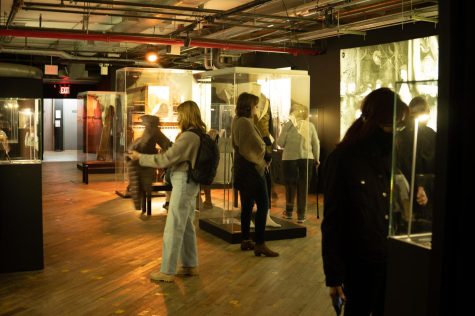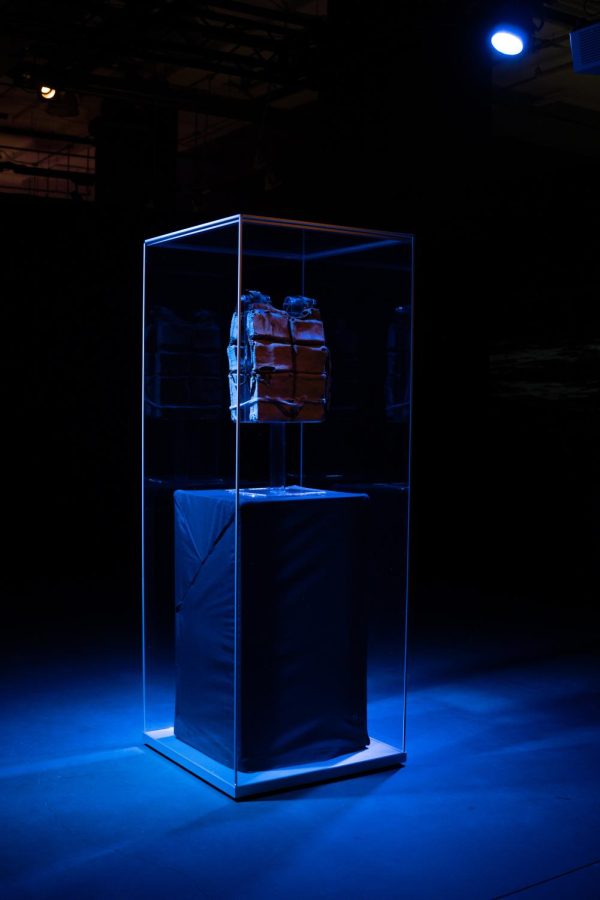The tip of the iceberg: Titanic Exhibition is brought to New York City
February 21, 2023
Have you ever wondered what the infamous iceberg that sank the Titanic would feel like against your hand? Well, now you can find out! “Titanic: The Exhibition” offers a hands-on, real-life replica of the iceberg that sank the unsinkable ship on April 14, 1912. Come aboard and immerse yourself in the halls of the majestic ship and observe artifacts from the sea that have been preserved for over 110 years. Located in Chelsea, “Titanic: The Exhibition,” takes visitors on a dive into the history of the Titanic, starting from the early days of its construction by Harland & Wolff in 1909, all the way to the miraculous stories from those who survived the wreckage.
When first entering, visitors walk aboard a replica of the Titanic and are given a complimentary audio tour guide. The auditory tour transports you to Belfast, Ireland in 1909 where there are large-scale black and white photographs of Bruce Ismay and Thomas Andrews, who were Chief Executive shipbuilders of the Titanic, with real correspondence letters written by the men who built the “unsinkable” ship. As the journey continues, stroll through the royal blue hallway to see recreations of first-class rooms, and second-class and third-class bunkers.
There is a plethora of eclectic artifacts to marvel at in each room. Some of the most intriguing artifacts on display at the exhibit include a life vest worn by a survivor, a silver ice cream dish found at the bottom of the ocean, a sapphire necklace (which partially inspired the film “Titanic”), a pair of children’s shoes, silk pajamas worn by a second class passenger, an original chair from the first class lounge and a fragment of the first class mahogany staircase. In total, there are over 200 historic artifacts on display at the exhibit. Each object tells a miraculous true story about life aboard the Titanic.
As the audio tour continues, visitors come face to face with an enormous ice glacier, and stand at a freezing twenty-eight degrees, so they can feel just how frigid it was on that fateful night in 1912. Past the ice glacier, the audio tour leads visitors to a dark room with screens playing real video footage of the wrecked Titanic’s found remains. This part of the exhibit is particularly eerie because decaying pieces of what is left of the ship, as well as photographs of frozen bodies at sea, are on view. This aspect of the exhibit accurately depicts the immense terror passengers felt when the Titanic began to sink.

A University student said their experience at the “Titanic: The Exhibit” was underwhelming because it was not as immersive as the exhibition was promoted to be. Aside from wanting it to be more of a hands-on experience, they said, “Overall, the museum was interesting, and I really liked how they paid tribute to the passengers, crew members and lives lost. Getting to touch the ice glacier was really cool, [but] I would have liked to have more hands-on aspects of the exhibit.”
Towards the end of the tour, there is a reconstruction of the ship with intricate details of the interior and exterior. Past the model ship, four large screens are illuminated with a list of names of Titanic crew members and passengers. “Titanic: The Exhibition” takes attendees on an emotional journey through time to experience the magnificence and sorrow through photographs and artifacts pertaining to the “unsinkable” Titanic.












